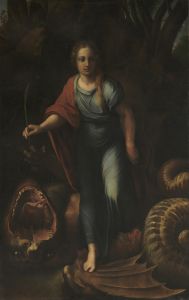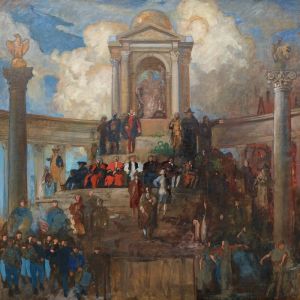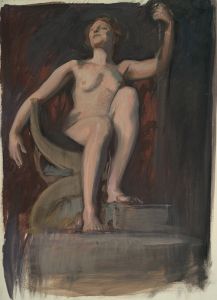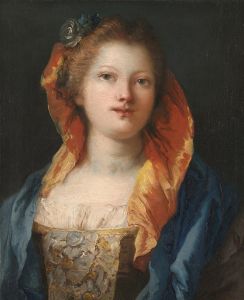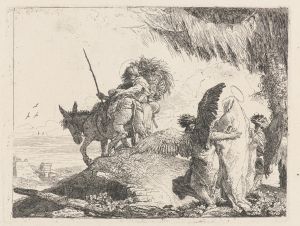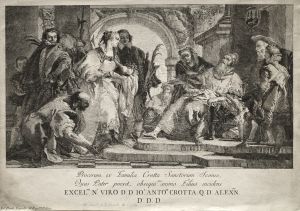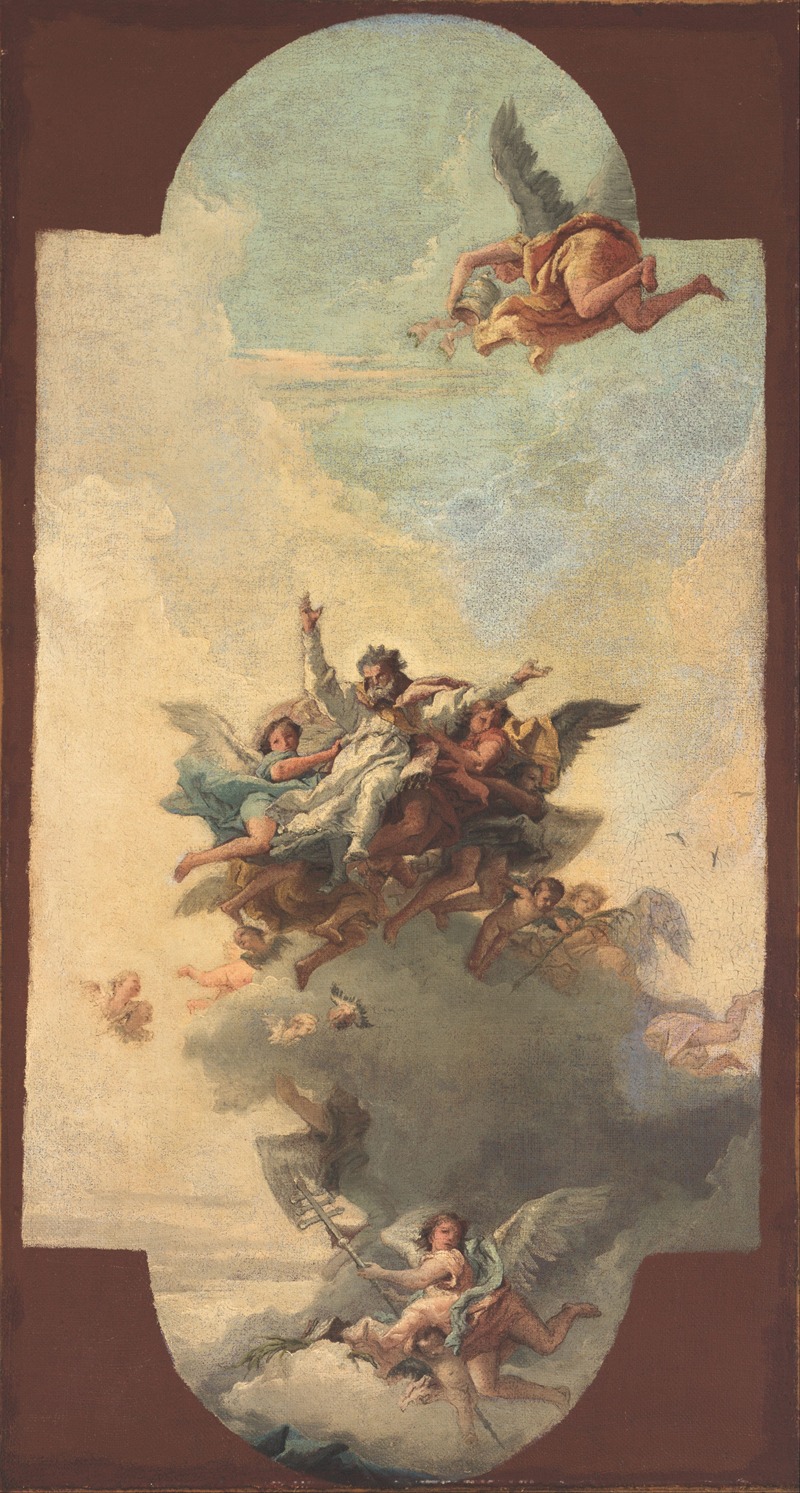
The apotheosis of a pope and martyr
A hand-painted replica of Giovanni Domenico Tiepolo’s masterpiece The apotheosis of a pope and martyr, meticulously crafted by professional artists to capture the true essence of the original. Each piece is created with museum-quality canvas and rare mineral pigments, carefully painted by experienced artists with delicate brushstrokes and rich, layered colors to perfectly recreate the texture of the original artwork. Unlike machine-printed reproductions, this hand-painted version brings the painting to life, infused with the artist’s emotions and skill in every stroke. Whether for personal collection or home decoration, it instantly elevates the artistic atmosphere of any space.
Giovanni Domenico Tiepolo, an Italian painter and printmaker, was an influential figure in the 18th-century Venetian art scene. He was the son of the renowned artist Giovanni Battista Tiepolo, and he often collaborated with his father on various projects. Domenico Tiepolo is known for his frescoes, religious paintings, and genre scenes, which reflect the Rococo style's elegance and dynamism.
"The Apotheosis of a Pope and Martyr" is one of Domenico Tiepolo's notable works, although specific details about the painting, such as its exact date of creation or the identity of the pope depicted, are not widely documented. The painting is believed to be a religious work that showcases Tiepolo's mastery in capturing divine and celestial themes, a common subject in his oeuvre.
In this painting, Tiepolo likely illustrates the glorification or elevation of a pope who is also a martyr, a theme that aligns with the Catholic tradition of venerating saints and martyrs. The term "apotheosis" refers to the elevation of someone to divine status, and in art, it often depicts the subject ascending to heaven or being surrounded by angels and divine light. This theme was popular in Baroque and Rococo art, where artists sought to convey religious ecstasy and the transcendence of earthly life.
Domenico Tiepolo's style is characterized by his use of vibrant colors, dynamic compositions, and expressive figures. His works often feature a sense of movement and drama, achieved through swirling clouds, gesturing figures, and the interplay of light and shadow. These elements are likely present in "The Apotheosis of a Pope and Martyr," contributing to the painting's sense of grandeur and spiritual elevation.
The Tiepolo family, particularly Giovanni Battista and Domenico, were known for their large-scale frescoes in churches, palaces, and villas across Italy and beyond. Their work was highly sought after by patrons who desired the opulent and theatrical style that the Tiepolos excelled in. Domenico, while influenced by his father's style, developed his own distinct approach, often infusing his works with a sense of humor and narrative complexity.
Although specific information about "The Apotheosis of a Pope and Martyr" is limited, it can be appreciated within the broader context of Domenico Tiepolo's body of work and the artistic traditions of the time. His paintings often reflect the religious and cultural milieu of 18th-century Venice, a city known for its rich artistic heritage and vibrant visual culture.
In summary, "The Apotheosis of a Pope and Martyr" by Giovanni Domenico Tiepolo exemplifies the artist's skill in depicting religious themes with a sense of drama and divine splendor. While detailed information about this particular painting is scarce, it remains a testament to Tiepolo's contribution to the Rococo movement and his ability to convey the spiritual aspirations of his era through art.





